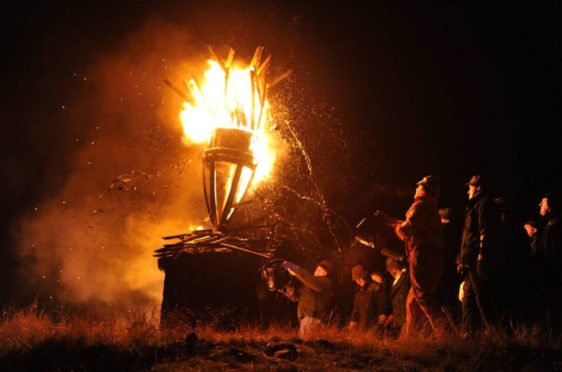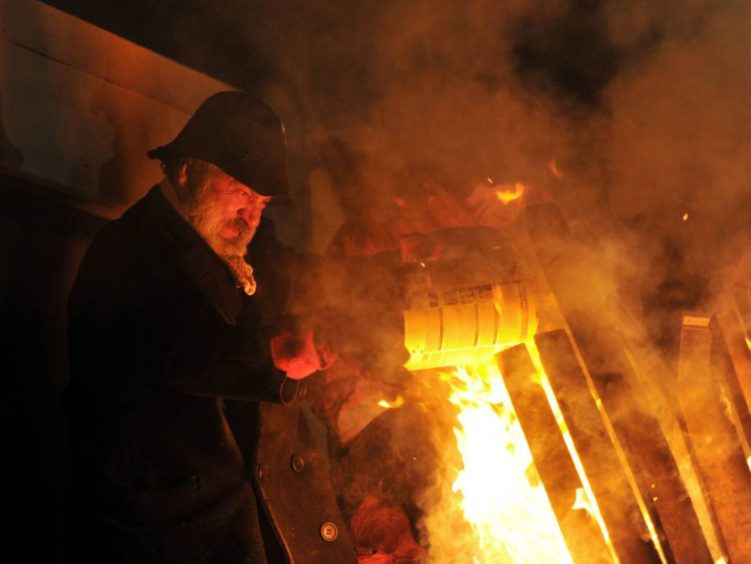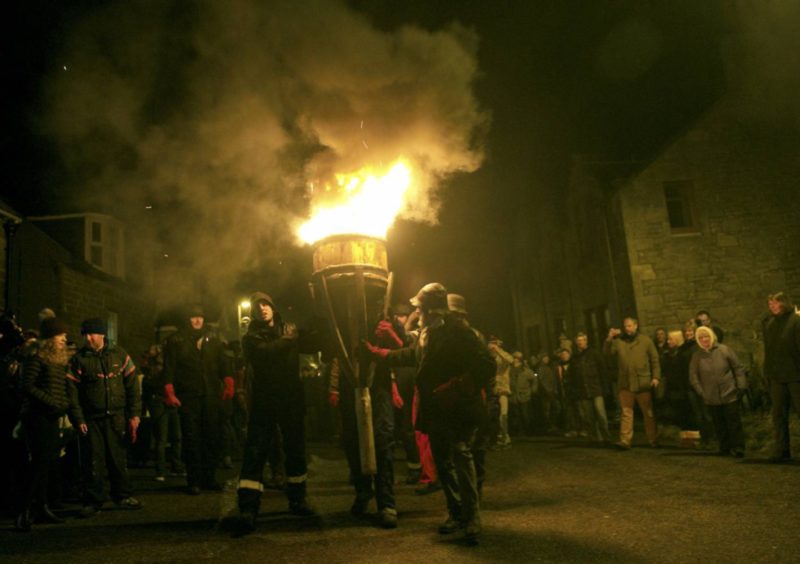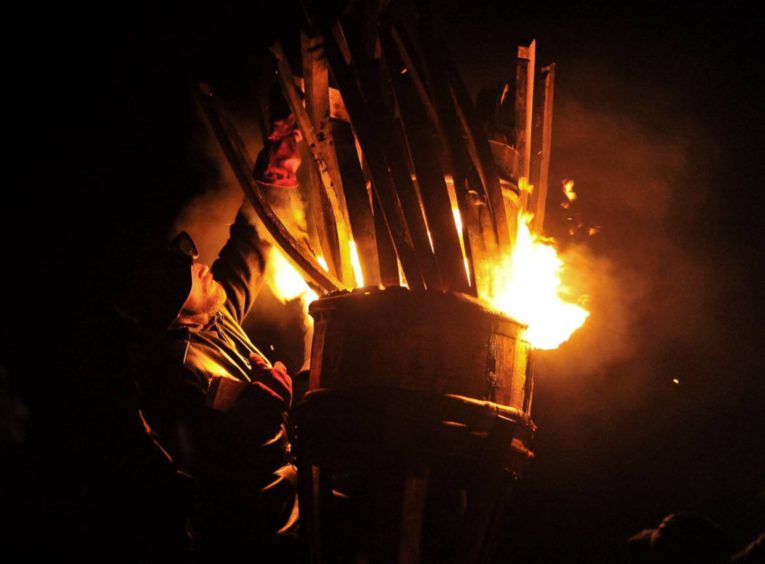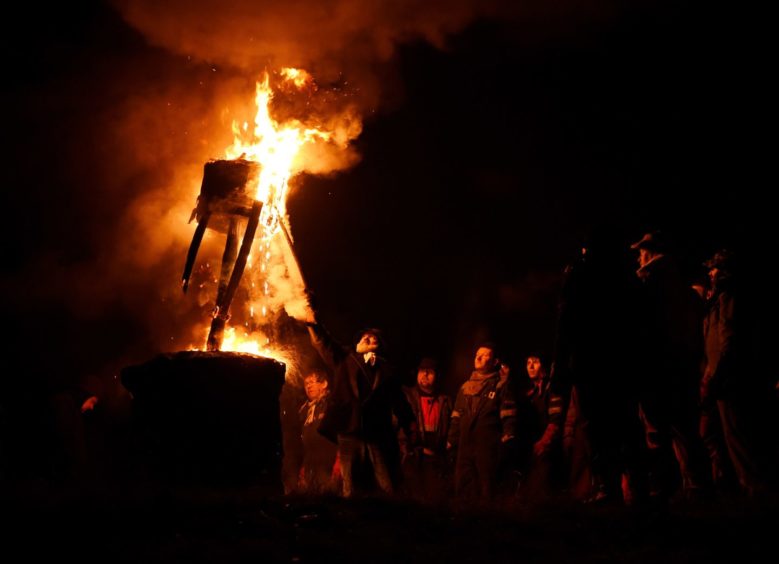The ceremonial Burning of the Clavie in Burghead has been cancelled for the first time since the Second World War due to coronavirus concerns.
Hundreds of revellers pack the streets of the Moray village every year in January to celebrate a tradition believed to date back more than 1,600 years.
However, the Clavie Crew organisers of Burghead’s big night have now announced coronavirus restrictions mean it cannot go ahead this year.
The last time the event fuelled by fire was axed was in 1945 amid concerns the fierce flames would be spotted by German pilots amid blackout conditions.
A Clavie Crew statement said: “We have worked with the police and looked at various options but realistically it would not be possible to prevent crowds of people attending.
“None of us wish to be responsible for spreading the virus which has killed thousands of our fellow Scots and millions worldwide.
“Had the new vaccines been available a few months earlier we may well have been able to go ahead but, this not being the case, cancelling was the only realistic option.”
The crew, which voted unanimously to cancel, confirmed the next Clavie night is now due to take place on January 11, 2022.
The annual burning is believed to date from new year celebrations when the village was home to a Pictish fort in the 3rd Century – though its exact origins have been lost to time.
However, when the rest of the country switched to holding celebrations on Hogmanay in the 18th Century, Brochers resisted and continued to hold their own event nearly two weeks later.
